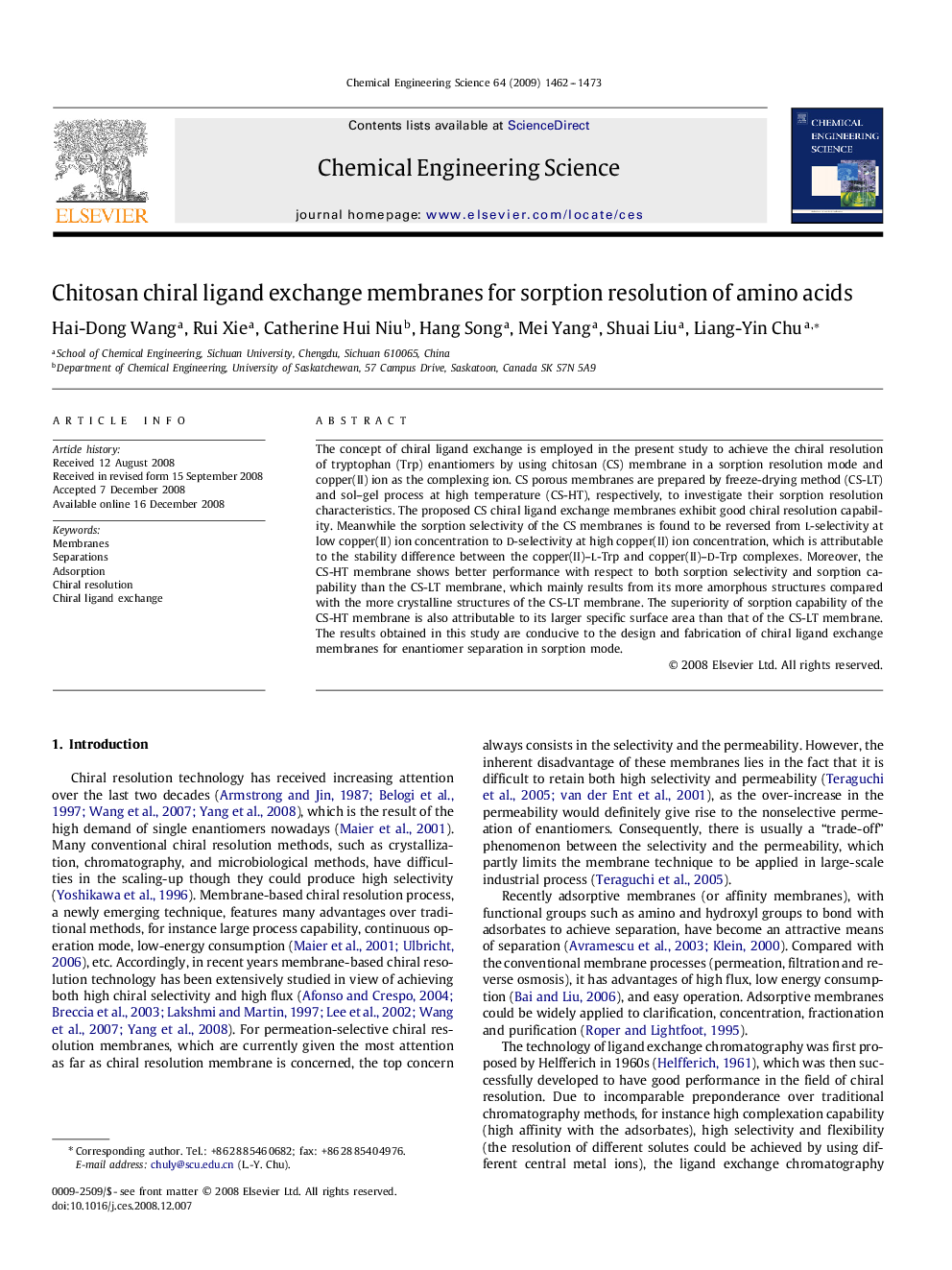| Article ID | Journal | Published Year | Pages | File Type |
|---|---|---|---|---|
| 158097 | Chemical Engineering Science | 2009 | 12 Pages |
The concept of chiral ligand exchange is employed in the present study to achieve the chiral resolution of tryptophan (Trp) enantiomers by using chitosan (CS) membrane in a sorption resolution mode and copper(II) ion as the complexing ion. CS porous membranes are prepared by freeze-drying method (CS-LT) and sol–gel process at high temperature (CS-HT), respectively, to investigate their sorption resolution characteristics. The proposed CS chiral ligand exchange membranes exhibit good chiral resolution capability. Meanwhile the sorption selectivity of the CS membranes is found to be reversed from L-selectivity at low copper(II) ion concentration to D-selectivity at high copper(II) ion concentration, which is attributable to the stability difference between the copper(II)–L-Trp and copper(II)–D-Trp complexes. Moreover, the CS-HT membrane shows better performance with respect to both sorption selectivity and sorption capability than the CS-LT membrane, which mainly results from its more amorphous structures compared with the more crystalline structures of the CS-LT membrane. The superiority of sorption capability of the CS-HT membrane is also attributable to its larger specific surface area than that of the CS-LT membrane. The results obtained in this study are conducive to the design and fabrication of chiral ligand exchange membranes for enantiomer separation in sorption mode.
